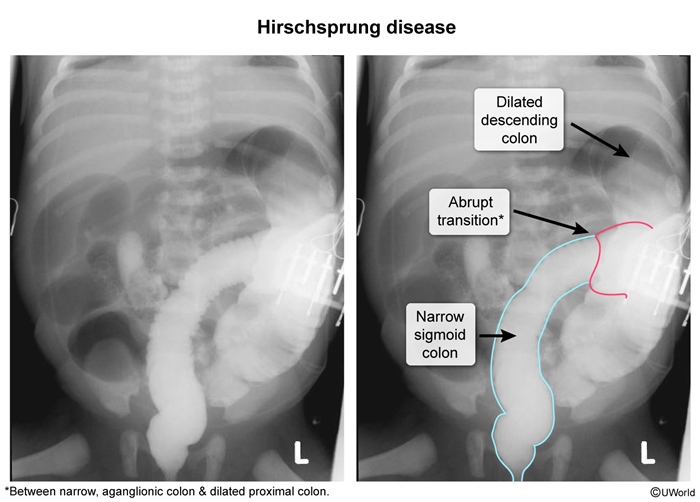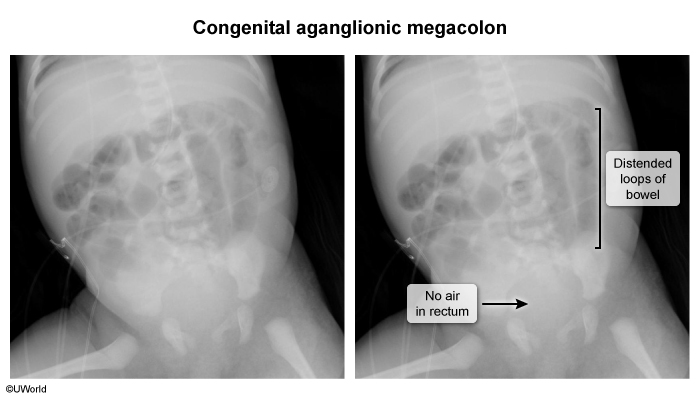Hirschsprung Disease
Article Sections
Introduction
Hirschsprung disease (HD) (also called congenital aganglionic megacolon) is a disorder in which a segment of the distal colon lacks parasympathetic ganglion cells due to failed neural crest cell migration during intestinal development (Figure 1). The affected segment is therefore unable to relax, causing a functional obstruction.
Pathophysiology
During embryonic development, neural crest cells normally enter the developing foregut and then migrate in a craniocaudal direction along the entire length of the bowel (Figure 2). The neural crest cells normally give rise to ganglion cells of the submucosal (Meissner) and myenteric (Auerbach) plexus in the colon. They are present in the wall of the proximal colon by the 8th week of gestation and in the rectum by the 12th week.
However, in patients with HD, neural crest cells do
Continue Learning with UWorld
Get the full Hirschsprung Disease article plus rich visuals, real-world cases, and in-depth insights from medical experts, all available through the UWorld Medical Library.
Figures
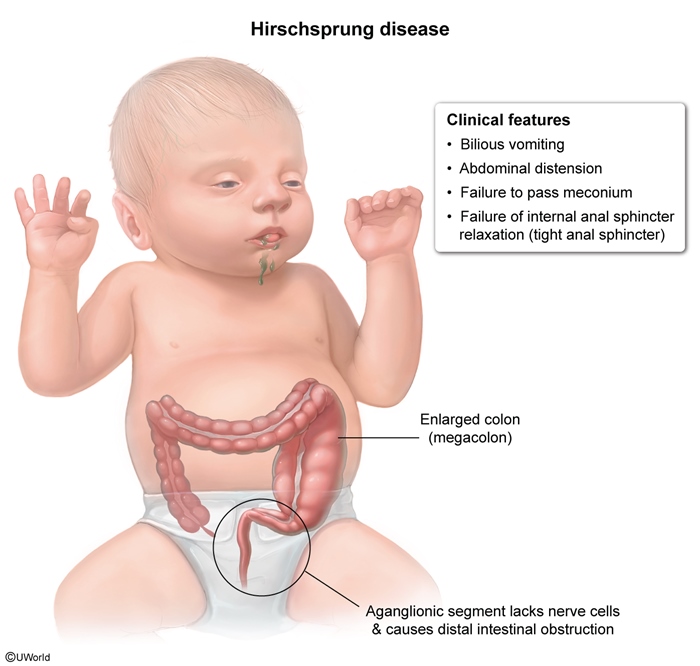
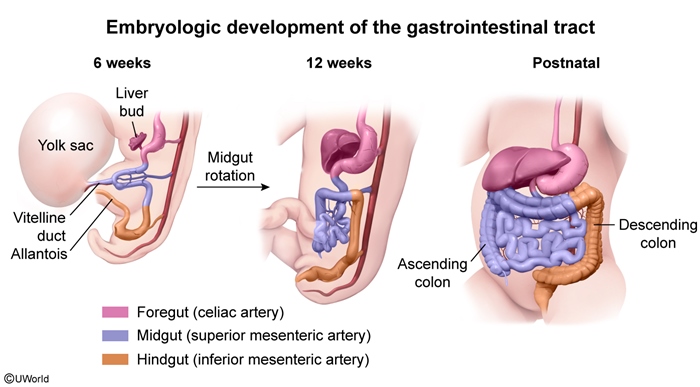
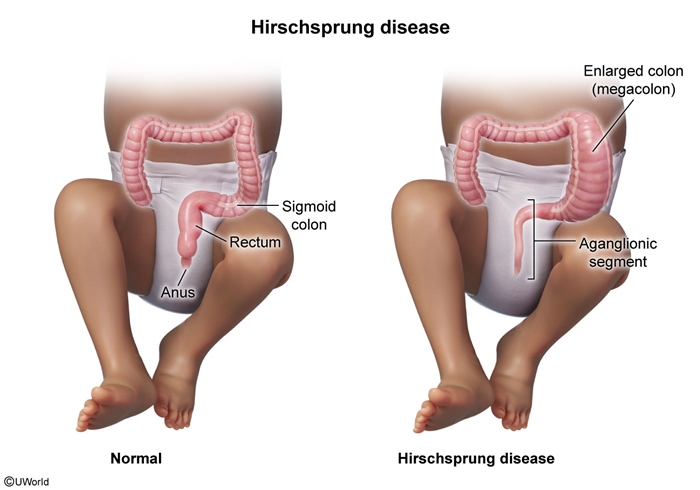
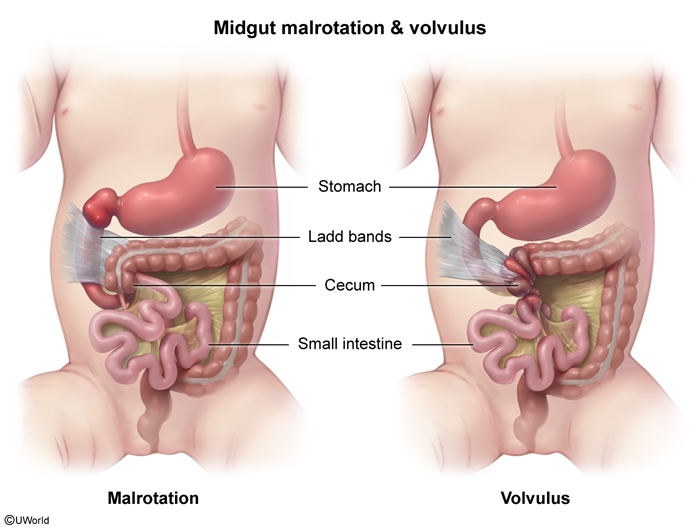
Images
